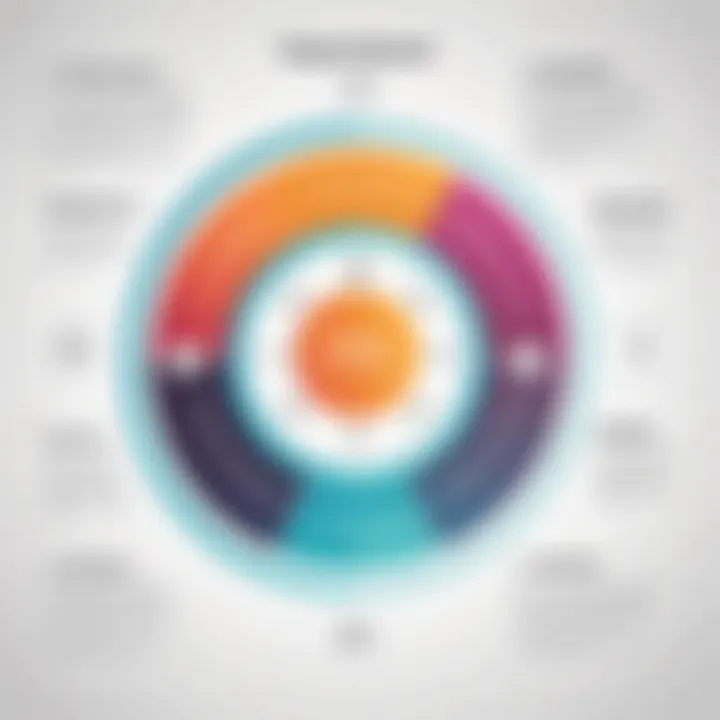Unlocking the Potential of Revel Systems Loyalty Program


Intro
In an era where customer loyalty stands as a pillar of business sustainability, loyalty programs have transformed the way businesses create relationships with their clients. The Revel Systems loyalty program is designed to address this critical aspect of retention and engagement. This guide delves into creating a comprehensive understanding of how this software operates, its core functionalities, and the potential it offers to small business owners.
Overview of Software
Purpose and Use Cases
Revel Systems, primarily known for its point-of-sale solutions, integrates a loyalty program that aligns with various operational needs of small businesses. These needs include enhancing customer satisfaction, increasing repeat visits, and driving revenue growth. The loyalty program supports retail, food service, and hospitality sectors by creating an ecosystem where customers feel valued.
Key Features
The main features of Revel Systems loyalty program are as follows:
- Customizable Rewards: Businesses can pick types of rewards that resonate with their clientele.
- Data Analytics: Offers insights into customer behavior and preferences, aiding in personalized marketing.
- Multi-channel Support: Customers can earn and redeem points across different platforms, which boosts engagement.
- Real-time Updates: Changes to rewards or promotional offerings reflect instantly to users, ensuring current information.
These features play a vital role in shaping customer experience and promoting brand loyalty.
In-Depth Review
Performance Analysis
When assessing the performance of the Revel Systems loyalty program, it's important to recognize its integration capabilities with existing systems. The software allows seamless data migration, which minimizes disruption during implementation. Performance metrics can include customer retention rates, average transaction values, and frequency of visits, thus enabling businesses to target their marketing efforts effectively.
User Interface and Experience
User experience is crucial within any loyalty program framework. The Revel Systems loyalty software provides a user-friendly interface, suitable for both customers and staff. Customers can easily access their loyalty status through mobile apps or kiosks. Staff training requirements are minimal due to the intuitive design, ensuring fast adaptation in high-paced environments.
"Loyalty programs must be simple to understand and navigate; customers quickly disengage from complicated structures."
Managing loyalty programs efficiently can lead to significant financial advantages and improve customer interaction. By implementing a solid loyalty program, businesses can build lasting relationships that contribute to their growth and sustainability.
Foreword to Revel Systems
Understanding Revel Systems is essential for anyone looking to enhance customer loyalty through technology. Revel Systems provides a point-of-sale (POS) system that integrates numerous functionalities, including a loyalty program designed to foster long-term customer relationships. Loyalty programs are critical in today’s competitive market as they help businesses create emotional ties with customers. These ties can lead to increased spend and repeat visits, outcomes vital for the sustainability of any business.
Overview of Revel Systems
Revel Systems is a cloud-based POS solution tailored for restaurants, retail, and other service-based businesses. It provides tools that facilitate day-to-day operations like sales tracking, inventory management, and employee scheduling. Beyond basic POS functions, its loyalty program offers an avenue for businesses to reward returning customers, thus enhancing customer retention and engagement.
In addition, Revel Systems' architecture is adaptable, allowing businesses to customize their interfaces according to their vertical needs. This flexibility makes it relevant for various industries, ensuring users can benefit regardless of their specific operational structures. Moreover, it supports integrations with other software, amplifying its usefulness for varying business ecosystems.
Importance of Loyalty Programs
Loyalty programs serve several strategic purposes. Primarily, they enable businesses to collect valuable data about their clients. This information can include purchase history, preferences, and behavior patterns, which are crucial for tailoring marketing campaigns.
Furthermore, a well-structured loyalty program not only incentivizes purchases but also fosters a sense of belonging among customers. When customers feel recognized and appreciated, it enhances their overall experience, making them more likely to return. Essentially, loyalty programs such as those offered by Revel Systems are not merely transactional; they are a strategic approach to cultivating brand loyalty that extends beyond price-based competition.
- Benefits of Implementing Loyalty Programs:
- Increased customer retention
- Enhanced customer insights
- Higher average transaction values
- Improved brand advocacy
Therefore, understanding the structure and implementation of Revel Systems' loyalty program will be crucial for businesses aiming to maximize their customer engagement strategies.
Understanding the Revel Systems Loyalty Program
Understanding the Revel Systems Loyalty Program is crucial for businesses aiming to enhance customer retention and engagement. This program, a part of Revel Systems’ broader offerings, effectively integrates technology with customer experience, resulting in measurable benefits. Businesses can leverage its features to foster loyalty, incentivize repeat purchases, and better understand customer preferences.
Through a well-structured loyalty program, businesses can cultivate long-lasting relationships with their customers. The insights gathered from customer interactions and behaviors allow businesses to tailor their services and offerings, hence maximizing potential sales opportunities. In a competitive landscape, having a robust loyalty program like that offered by Revel Systems can distinguish a business from its rivals.
Moreover, this program is not merely about transactional loyalty; it emphasizes emotional engagement. By recognizing and rewarding customers for their loyalty, companies build a sense of community and belonging, which is increasingly valuable in today's market.
In summary, a comprehensive understanding of the Revel Systems Loyalty Program enables businesses to tap into a wealth of information, drive customer satisfaction, and ultimately, enhance their bottom line.


Core Features
The Revel Systems Loyalty Program boasts several core features that stand out in the marketplace. First, it provides a flexible reward system that allows businesses to design rewards according to their specific needs. Businesses can choose from point-based rewards, tier systems, or even cashback incentives. This flexibility enables businesses to tailor their approach, catering directly to the preferences of their customer base.
Moreover, the program offers comprehensive reporting tools. These tools allow businesses to track engagement and spending patterns effectively. By understanding these metrics, companies can adjust their loyalty strategies to better meet customer needs. Additionally, the integration with other Revel Systems tools streamlines operations, facilitating easy access to customer data and financial information.
Another significant feature is its mobile accessibility. Customers can check their points or rewards via a mobile app, reinforcing convenience and enhancing the user experience. This accessibility goes hand-in-hand with the need for businesses to meet modern consumer expectations, where technology plays a pivotal role in daily life.
Customization Options
Customization is a key strength of the Revel Systems Loyalty Program. Businesses can design their loyalty program to reflect their brand identity and customer preferences. From personalized messaging to custom reward structures, the program can be adapted significantly. Here, the focus remains on creating a unique program that resonates with customers.
Furthermore, businesses can segment their customers based on various demographics or purchase history. This segmentation allows for targeted promotions and tailored communication. It enhances customer satisfaction as individuals feel valued when receiving offers that align with their preferences and behaviors.
The ease of integration with existing systems further simplifies customization. Projects do not require overhauls of current processes; instead, the Revel Systems Loyalty Program can be implemented alongside existing structures, thereby minimizing disruptions in daily operations.
Overall, the combination of these features and customization capabilities makes the Revel Systems Loyalty Program an attractive option for businesses looking to boost engagement and loyalty.
Setting Up the Loyalty Program
The process of setting up the loyalty program is crucial for any business wanting to improve customer retention and engagement. A well-structured loyalty program can significantly impact customer satisfaction, driving repeat business and fulfilling the ultimate goal of maintaining strong relationships with customers. When businesses take the time to correctly configure their loyalty programs, they can benefit from enhanced data collection and insight into customer behavior. Therefore, this section provides a guide that emphasizes not only the initial configuration steps but also the importance of integrating these systems with other operational tools.
Initial Configuration Steps
Beginning the configuration of the loyalty program demands careful planning. The first step is to define the program's goals and objectives clearly. Whether it is about increasing the average basket size, boosting frequency of visits, or improving overall customer satisfaction, pinpointing these objectives helps tailor the program accordingly.
- Choose a Program Type: Decide if the loyalty program will be points-based, tiered, cashback, or a hybrid approach.
- Set Up Reward Structures: Determine how customers will earn rewards. For instance, will customers earn a point per dollar spent, or will it be tied to specific products or services?
- Define Customer Segments: Segmenting customers helps create targeted promotions. Understanding different behavior patterns allows for more customized rewards.
- Software Configuration: Configure the Revel Systems platform by inputting the defined parameters. This includes linking point accrual systems, tracking customer purchases, and managing member profiles. Proper software functioning enables tracking and executing the program seamlessly.
- Testing: Before going live, thorough testing of all systems is essential. This includes simulating transactions and reward redemption to ensure everything operates smoothly.
Integrating with Existing Systems
Integration with existing systems enhances the effectiveness of the loyalty program. Smooth transition and connection can streamline operations.
First, assess current systems in use within the organization. This includes point of sale systems, customer relationship management software, and e-commerce platforms. Here are key factors to consider during integration:
- Data Synchronization: Ensure that customer data from the loyalty program is synchronized with the existing database. This allows for a unified view of customer behavior and profiles.
- API Compatibility: Revel Systems offers APIs that can be leveraged to connect with other tools. Familiarize with the documentation for easy integration, facilitating data exchange and real-time updates.
- Maintaining Data Integrity: It is critical to safeguard the accuracy of customer information during integration. Any inconsistencies can lead to customer dissatisfaction.
- Training Staff: Staff should be well trained on how to use the new systems. This ensures they can assist customers correctly and resolve any issues that may arise.
Integrating the loyalty program seamlessly with established systems not only saves time but also enhances the value of customer interactions.
"The successful implementation of a loyalty program hinges greatly on a well-thought-out setup and integration strategy."
Engaging Customers through Rewards
The concept of engaging customers through rewards acts as a cornerstone for the success of loyalty programs. When businesses effectively implement rewards, it leads to increased customer satisfaction, which in turn fosters loyalty. Customers appreciate being recognized for their patronage, and rewards serve to reinforce their decision to choose a particular business over competitors. Engaging customers in this way creates a sense of community and belonging, enhancing their overall experience. Notably, when customers have access to tangible benefits, they are more likely to return, leading to a cycle of engagement and loyalty.
Types of Rewards Offered
In order to engage customers effectively, it's essential to offer a variety of rewards that appeal to different preferences. Here are some types of rewards often found in loyalty programs:
- Point-based Rewards: Customers earn points for each purchase and can redeem them for discounts or free products. This encourages repeat purchases.
- Tiered Rewards: A structured system where customers gain access to different benefits as they reach certain spending thresholds. This encourages higher spending.
- Cashback Offers: Customers receive a percentage of their spending back in cash or store credit. This appeals to budget-conscious consumers.
- Exclusive Access: Offer members early access to sales, new products, or special events. This makes customers feel valued and special.
- Experiential Rewards: Provide unique experiences, such as workshops or meet-and-greets. These foster deeper connections with the brand.
Having a diverse range of rewards allows businesses to target various customer behaviors and preferences, ensuring a broader appeal.
Promotional Strategies
When it comes to promoting the loyalty program, businesses must be strategic. Effective promotional strategies can significantly increase participation rates and enhance customer engagement. Consider the following:
- Use Multiple Channels: Promote the rewards program through email, social media, and in-store signage. Consistent messaging across channels reinforces awareness.
- Leverage Social Proof: Showcase testimonials and success stories from satisfied customers who have benefited from the rewards. This builds trust and may entice others to join.
- Onboarding Offers: Provide an attractive sign-up bonus, such as bonus points or discounts for new members. This initial incentive can boost enrollment significantly.
- Regular Communication: Keep customers informed about their reward status, upcoming promotions, and exclusive offers. Regular engagement encourages ongoing participation.
- Gamify the Experience: Introduce elements like challenges or competitions where customers can unlock rewards by completing specific tasks. This can make the program more interactive and fun.
- Monitor and Adjust: Make use of data analytics to track which promotional strategies are working best, then adjust tactics accordingly to improve effectiveness.
By employing these strategies, businesses can effectively engage customers and ensure that the loyalty program converts casual buyers into devoted supporters.
Lastly, it is crucial to constantly assess the effectiveness of rewards and promotional strategies. This allows businesses to stay ahead in a competitive market.
Analyzing Customer Behavior
Understanding customer behavior is crucial for any loyalty program, including the Revel Systems loyalty program. Analyzing how customers interact with products and services can unveil insights that drive improvement. Businesses can identify engagement patterns, retention rates, and preferences. This knowledge shapes strategies that enhance customer loyalty and overall satisfaction.


Data Collection Techniques
Effective data collection in customer behavior analysis relies on diverse methods that tap into varying aspects of consumer interactions. Businesses often utilize point-of-sale data to track purchases, customer demographics, and transaction history. Another technique involves surveys and feedback forms, which gather direct opinions and experiences from customers. Furthermore, online tools, such as web analytics, offer insights on customer website visits, time spent on pages, and preferred content. These methods work together to provide a holistic view of customer behavior.
- Point-of-Sale Data: Captures detailed ongoing transaction information, providing a foundation for understanding purchasing habits.
- Customer Surveys: Helps in acquiring personal insights and immediate feedback, revealing customer satisfaction levels.
- Web Analytics: Useful in assessing online engagement, identifying popular products, and improving web interfaces.
Incorporating several data collection techniques ensures a comprehensive understanding of customer interactions, thereby refining the effectiveness of the loyalty program.
Using Data for Program Optimization
Employing the collected data effectively allows businesses to fine-tune the Revel Systems loyalty program. One essential strategy involves segmenting customers based on behavior. This segmentation enables tailored promotions that resonate with specific groups, increasing engagement and boosting retention.
Another practice is A/B testing different rewards or promotional strategies to evaluate performance metrics. For example, analyzing response rates to two different discount offers can indicate which is more effective at driving purchases.
This approach not only maximizes customer satisfaction but also aligns incentives with business goals. By continually analyzing the data, businesses can dynamically adjust their strategies, ensuring the loyalty program remains relevant.
"Data-driven decisions empower businesses to enhance engagement and strengthen customer connections."
To maintain ongoing optimization:
- Monitor Engagement Rates: Assess how often customers use their rewards and adapt based on participation trends.
- Evaluate Customer Feedback: Actively review responses from surveys to identify areas for improvement.
- Adjust Promotions: Use historical data to determine optimal reward types and timings.
Engaging with customer data proactively leads to a more agile loyalty program. This preparedness caters to evolving customer expectations, ensuring the program's long-term success.
Measuring Success
In the context of the Revel Systems loyalty program, measuring success is crucial. This step allows businesses to assess not only the performance of the loyalty initiative but also its impact on customer behaviors and overall satisfaction. Understanding how the program performs helps in making informed decisions for improvements and enhancements.
Key Performance Indicators
Identifying key performance indicators, often referred to as KPIs, is vital for understanding the effectiveness of the loyalty program. KPIs provide quantifiable measures that can shed light on whether the program meets its goals. Some common KPIs for loyalty programs include:
- Customer Retention Rate: This metric indicates how well a business keeps its customers over time. High retention usually speaks to a successful loyalty program.
- Average Purchase Frequency: Monitoring how often customers make purchases can reveal changes in behavior linked to the loyalty program.
- Redemption Rate: This shows the percentage of rewards redeemed by customers. A low rate may suggest that rewards are not appealing or accessible enough.
- Customer Lifetime Value (CLV): This indicator estimates the total revenue a business can expect from a customer throughout their relationship. A strong loyalty program can enhance this figure.
Utilizing these KPIs effectively requires a systematic approach to data analysis. Businesses must constantly track these indicators to refine their loyalty offerings.
Feedback Mechanisms
Feedback mechanisms are essential in obtaining insights directly from customers. Engaging customers to share their experiences with the loyalty program can guide future improvements. Some effective feedback methods include:
- Surveys: Sending out surveys can provide valuable information on customer satisfaction and preferences.
- Focus Groups: Organizing focus groups allows a collaborative environment where insights can be gathered in real-time.
- Social Media Monitoring: Observing conversations about the loyalty program on platforms like Facebook or Reddit can unveil customer sentiments that may otherwise be overlooked.
Incorporating feedback into the evaluation process can help tailor the loyalty program to meet customer needs better.
"Continuous measurement and feedback are not just best practices; they are necessities for refining loyalty strategies and achieving lasting success."
Challenges of Implementing a Loyalty Program
Implementing a loyalty program within Revel Systems offers various rewards, but it also brings significant challenges. Understanding these challenges is crucial for success. Often, businesses underestimate the complexities involved, leading to an ineffective loyalty strategy. The friction in launching a program can hinder customer engagement and retention.
One major aspect is aligning the loyalty program with business objectives. If the program does not resonate with the brand or customer expectations, it may fail. For instance, if customers expect value from rewards but receive minimal benefits, frustration arises. This discord can result in disengagement, negating the purpose of the loyalty program.
Common Pitfalls
In the journey of creating a loyalty program, several common pitfalls can occur:
- Lack of Clear Goals: Without well-defined objectives, a loyalty program can lose direction. Goals should inform how success is measured.
- Ignoring Customer Preferences: Designing a program without considering what customers truly want can lead to lackluster engagement. Customer feedback should actively shape the program.
- Overly Complicated Structures: If customers find it hard to understand how to earn or redeem rewards, their enthusiasm may diminish. Simplicity tends to yield better participation.
- Inadequate Promotion: Launching a loyalty program without sufficient marketing can leave customers unaware. Effective communication strategies are essential.
- Neglecting Data Analysis: Failing to analyze customer behavior and feedback can stifle improvements. Data must be utilized to adapt the program based on real-world usage.
Strategies for Overcoming Challenges
While challenges are prevalent, various strategies can help navigate these obstacles effectively:
- Set Specific Objectives: Establish clear, measurable goals from the start. This creates a solid foundation for evaluating performance.
- Engage with Customers: Solicit customer feedback through surveys or social media. Knowing what they value creates a customer-centric approach.
- Simplify the Program: Create an easily understandable program structure. This may involve straightforward earning and redemption processes.
- Promote Consistently: Use multiple channels for communication. Social media platforms, emails, and in-store signages can inform customers about the program's benefits.
- Utilize Data Effectively: Regularly assess data and insights. A dynamic approach to evolving the loyalty program keeps it relevant.


By addressing these challenges early on, businesses can foster a loyalty program that not only retains customers but also contributes to a positive brand image.
Comparing Revel Systems Loyalty Program with Competitors
Comparing the Revel Systems Loyalty Program with its competitors is an essential step for businesses looking to enhance customer retention and loyalty. This section provides critical insights into how Revel Systems stacks up against other offerings in the market. By understanding the strengths and weaknesses of Revel’s program, businesses can make informed decisions that align with their specific needs. This comparison offers clarity on what to expect from the program and factors that may influence a choice between different loyalty software platforms.
Market Positioning
Revel Systems strategically positions its loyalty program in a competitive marketplace by emphasizing customer engagement and ease of use. The program caters primarily to sectors such as retail and hospitality, thereby targeting small to mid-sized businesses that require a robust solution without complexity.
Compared to key competitors like Square, Shopify, and Loyverse, Revel Systems focuses on integrated solutions that streamline operations while enhancing customer experiences. This direct approach can be particularly appealing for businesses already using other Revel Services, as it creates a unified ecosystem that simplifies both management and analytics.
Key Points of Market Positioning:
- Integrated System: Seamless connectivity with other Revel tools.
- Target Demographic: Small to mid-sized businesses in retail and food service.
- Ease of Use: User-friendly interface that reduces the learning curve.
Overall, Revel Systems successfully positions itself as a dependable partner for businesses eager to improve customer loyalty through straightforward solutions.
Feature Comparison
When analyzing features, a side-by-side understanding of Revel’s offerings against those of its competitors is vital. Revel's loyalty program boasts several core functions that appeal to business owners, and a feature comparison can elucidate these advantages and limitations.
Top Features to Consider:
- Points System: Customers can earn points with purchases, redeemable for rewards. Some competitors have diverse rewards options, but Revel’s system ensures simplicity and transparency.
- Customization: Businesses can tailor loyalty initiatives to better suit their customer base. Competitors may offer templates, but Revel's flexibility stands out in adjusting parameters based on customer behavior.
- Mobile Integration: Revel supports direct engagement through mobile apps. This differs from competitors that may not offer robust mobile functionalities.
- Analytics Dashboard: Revel provides comprehensive data analytics allowing for deep insights into customer behavior. In contrast, some competitors may lack this depth of insight, offering only basic analytics.
"In today's marketplace, understanding feature differentiation can significantly impact a business's ability to retain customers and drive revenue."
Future Trends in Loyalty Programs
Understanding future trends in loyalty programs is crucial for businesses aiming to retain customers and enhance engagement. As technology evolves, so do consumer expectations and the means of fulfilling them. This section explores how advancements in technology and shifting consumer expectations shape loyalty programs, focusing on their implications for Revel Systems and similar platforms.
Technological Advancements
Technological advancements are critical in redefining how loyalty programs operate. The integration of artificial intelligence and machine learning plays a significant role in personalizing customer experiences. With the use of data analytics, companies can gather extensive insights about consumer behavior, preferences, and purchase history. This information allows for tailored rewards, making customers feel valued and understood.
Mobile applications are another trend. Customers can easily access loyalty programs, view rewards, and receive personalized offers directly through their smartphones. This convenience increases engagement and encourages participation.
Moreover, blockchain technology is emerging as a way to ensure transparency in rewards programs. Customers can track their points and rewards securely, fostering trust in the system.
- The rise of gamification is noticeable as well. Incorporating game-like elements into loyalty programs can enhance customer interaction, making the experience more fun and rewarding. By earning badges or competing with others, customers are more likely to engage with the brand consistently.*
In summary, technological advancements not only improve operational efficiency but also transform customer engagement strategies into highly personalized experiences.
Consumer Expectations
Consumer expectations are changing rapidly, primarily driven by the digital landscape. Today's customers seek not only good products but also a seamless experience. Loyalty programs must evolve to meet these expectations. A few core elements define modern consumer preferences:
- Personalization: Modern customers expect interactions that cater specifically to them. Loyalty programs need to offer rewards that align with individual preferences and shopping habits.
- Ease of Use: Simplicity is paramount. Customers prefer systems they can navigate without hassle. Intuitive interfaces and straightforward processes will always attract more engagement.
- Instant Gratification: Consumers desire immediate rewards. Programs that provide swift benefits encourage continuous participation rather than waiting for long-term rewards.
Understanding these expectations helps businesses not only to design better programs but also to create lasting relationships with their customers.
The End
In this article, we explored the Revel Systems loyalty program in detail. This conclusion ties together the various insights presented so far. The Revel System's loyalty program is a vital tool for businesses seeking to foster customer retention and engagement. With its robust features and customization options, it presents a unique advantage for small businesses aiming to improve their customer relationships.
Summary of Key Insights
Several key points were highlighted throughout the article:
- User-Friendly Interface: The system is designed to be intuitive, allowing businesses to set it up without extensive technical expertise.
- Customization Options: Businesses can tailor the loyalty program to fit their brand identity, offering personalized rewards that resonate with their customers.
- Data Insights: Analyzing customer behavior through data collection helps businesses refine their strategies for engagement and rewards.
- Integration Capabilities: The program can easily integrate with existing systems, ensuring seamless operation.
These insights reinforce the importance of the loyalty program in driving growth and customer satisfaction in an increasingly competitive marketplace.
Final Thoughts on Loyalty Programs
The landscape of customer loyalty is evolving. As customer expectations shift towards more personalized experiences, loyalty programs like that from Revel Systems play a crucial role in meeting these demands. Implementing such a program can lead to:
- Increased Customer Satisfaction: Customers appreciate rewards that align with their preferences.
- Higher Retention Rates: Offering incentives makes it more likely for customers to return.
- Valuable Customer Insights: Businesses can gain a deeper understanding of their customers’ purchasing behavior.
In summary, adopting a well-structured loyalty program is no longer optional for businesses intending to thrive. The Revel Systems loyalty program stands out as a compelling option for small businesses seeking to enhance customer engagement and loyalty effectively. By responding proactively to customer expectations and maintaining consistent value delivery, companies can ensure sustainable growth in the long run.







